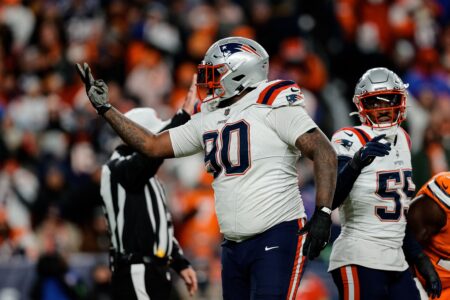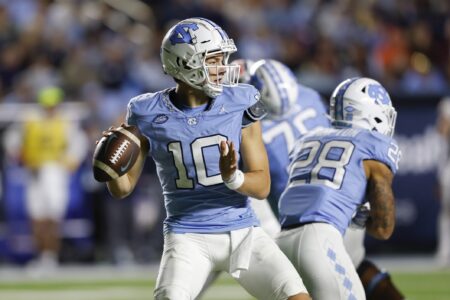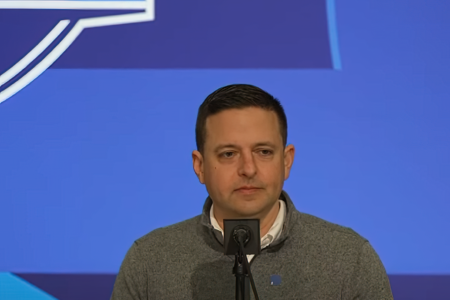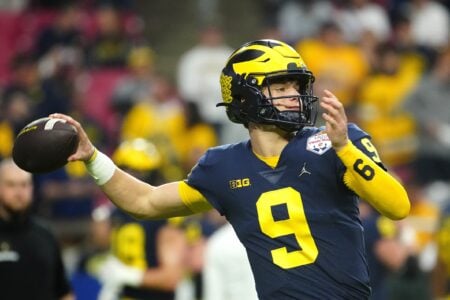tom.kordis
Practice Squad Player
- Joined
- Feb 4, 2015
- Messages
- 130
- Reaction score
- 72
(My first post. Mods, please move it to proper location.)
This whole DeflateGate nonsense is absurd.
And these physicists are as useless as tits on a boar. The MIT physicist talking about how great MIT physics professors are ... but then fails to provide any calculations. The Columbia physicist saying "he thinks that the balls were manipulated" ... also without running any numbers. They are both useless.
More important, they are both WRONG.
Which they both would have realized instantly, if they had bothered to run some numbers.
Generalities are useful ... as a starting point. Not the finish.
The only way to understand what happened is to do some calculations to show exactly how much the balls would have deflated under the conditions seen.
THEN what happened becomes obvious: Nobody tampered with those footballs.
Brady set them at 12.5 (at the low end of the spectrum, but completely legal) at ~75°F.
Mother Nature then dropped the pressure by an additional 1.5 psi when they were cooled from 75°F to 50°F.
0.5 psi + 1.5 psi = "2 pounds (sic) under" the NOMINAL pressure of 13.0 psi.
__
How engineers do it...
1) PV = nRT => P/T = nR/V
2) For nR/V = constant, P1/T1 = P2/T2 => P2 = P1 * (T2/T1)
3) For P1 = 12.5 psi, T1 = 75°F, T2 = 50°F
(but these equations REQUIRE absolute temperatures (°R) & pressures (psia).
Putting in °F or gauge pressure (psig) produces the wrong answer.
"Wrong answers" are very bad things.!
"Correct answers" are good things.!)
P2 = (12.5+14.7) psia * (50+460)°R / (75+460)°R = 25.9 psia
Converting back to gauge pressure:
P2 = 25.9 psia - 14.7 psi = 11.2 psig.
Note: P2 = the internal pressure of the balls measured at 50°F)
In three steps, & one calculation, you can see that the pressure is 1.8 psi below the NOMINAL (13.0 psig). Brady took out 0.5 psi (by setting them at 12.5, instead of 13.0 psig. Mother Nature takes out 1.3 psi simply by cooling the balls.
The total drop in pressure is exactly what they found: 2 psi lower than the nominal 13 psi.
The "Mother Nature" portion of the pressure drop happens to EVERY SINGLE BALL ever used in the NFL.
__
And then engineers run experiments.
Because sometimes theory isn't exactly right. As in this case.
When you run the experiment, as I have, you find that the real pressure ends up slightly lower than pure theory predicts. Using ball pressurized to 12.5 psi @ 75°F, and then exposed to cold water & cold air at 50°F, I recorded a pressure of 11.0 psi after 70 minutes.
The theoretical pressure lapse rate is 0.051 psi/°F.
The experimental pressure lapse rate is 0.061 psi/°F.
Experiment trumps theory.
[Note: some weathermen (as on The Weather Channel) have asserted that the pressure lapse rate is 0.02 psi/°F (or the equivalent, 0.2 psi/10°F). You get this WRONG answer by using gage pressure instead of absolute pressure. You'd think that 3 f'king PhDs, all consulting with each other, could get this trivial number correct. But noooooo....]
To those who ask, "why didn't the Colts balls deflate?", the answer is "They did." EVERY single ball ever used in any NFL game deflates by these amounts in these temperatures. No exceptions allowed.
To the question, "why didn't they announce that the Colts balls were deflated, the answer is, "They didn't check the Colts balls. There were never challenged as being under-inflated." If they had checked the Colts balls, they would have found exactly the same pressure DROP, from Luck's preferred starting pressure.
To the question, "Why did the pressure come up when they went back inside to measure them at half-time?", the answer is "it takes many hours for the temp of the air INSIDE the ball to return to room temp." The balls are, in essence, very good thermos bottles that nobody can open up. Leather is a pretty good insulator.
In the last couple of days, a source-less report is saying "only one ball was 2 psi under, the others were just a tad under". How do you explain this? The answer is: the report is bogus, the information is false. There is NO EXCEPTION to the calculations above.
It's not called "The Ideal Gas Suggestion".
It's called "The Ideal Gas Law".!
There is no mystery here.
NOBODY tampered with those balls.
The Patriots organization knows this.
The NFL lawyers will do what lawyers do: delay & rack up billable hours.
If they fired the lawyers & hired a competent engineer, this thing would have been over a day after it started.
It took me 2 minutes to do the calc, & 1 day to run the experiment, all on a $600 budget. ($300 of which I got back when I returned 3 of the 4 NFL game balls I bought to test.!)
This whole DeflateGate nonsense is absurd.
And these physicists are as useless as tits on a boar. The MIT physicist talking about how great MIT physics professors are ... but then fails to provide any calculations. The Columbia physicist saying "he thinks that the balls were manipulated" ... also without running any numbers. They are both useless.
More important, they are both WRONG.
Which they both would have realized instantly, if they had bothered to run some numbers.
Generalities are useful ... as a starting point. Not the finish.
The only way to understand what happened is to do some calculations to show exactly how much the balls would have deflated under the conditions seen.
THEN what happened becomes obvious: Nobody tampered with those footballs.
Brady set them at 12.5 (at the low end of the spectrum, but completely legal) at ~75°F.
Mother Nature then dropped the pressure by an additional 1.5 psi when they were cooled from 75°F to 50°F.
0.5 psi + 1.5 psi = "2 pounds (sic) under" the NOMINAL pressure of 13.0 psi.
__
How engineers do it...
1) PV = nRT => P/T = nR/V
2) For nR/V = constant, P1/T1 = P2/T2 => P2 = P1 * (T2/T1)
3) For P1 = 12.5 psi, T1 = 75°F, T2 = 50°F
(but these equations REQUIRE absolute temperatures (°R) & pressures (psia).
Putting in °F or gauge pressure (psig) produces the wrong answer.
"Wrong answers" are very bad things.!
"Correct answers" are good things.!)
P2 = (12.5+14.7) psia * (50+460)°R / (75+460)°R = 25.9 psia
Converting back to gauge pressure:
P2 = 25.9 psia - 14.7 psi = 11.2 psig.
Note: P2 = the internal pressure of the balls measured at 50°F)
In three steps, & one calculation, you can see that the pressure is 1.8 psi below the NOMINAL (13.0 psig). Brady took out 0.5 psi (by setting them at 12.5, instead of 13.0 psig. Mother Nature takes out 1.3 psi simply by cooling the balls.
The total drop in pressure is exactly what they found: 2 psi lower than the nominal 13 psi.
The "Mother Nature" portion of the pressure drop happens to EVERY SINGLE BALL ever used in the NFL.
__
And then engineers run experiments.
Because sometimes theory isn't exactly right. As in this case.
When you run the experiment, as I have, you find that the real pressure ends up slightly lower than pure theory predicts. Using ball pressurized to 12.5 psi @ 75°F, and then exposed to cold water & cold air at 50°F, I recorded a pressure of 11.0 psi after 70 minutes.
The theoretical pressure lapse rate is 0.051 psi/°F.
The experimental pressure lapse rate is 0.061 psi/°F.
Experiment trumps theory.
[Note: some weathermen (as on The Weather Channel) have asserted that the pressure lapse rate is 0.02 psi/°F (or the equivalent, 0.2 psi/10°F). You get this WRONG answer by using gage pressure instead of absolute pressure. You'd think that 3 f'king PhDs, all consulting with each other, could get this trivial number correct. But noooooo....]
To those who ask, "why didn't the Colts balls deflate?", the answer is "They did." EVERY single ball ever used in any NFL game deflates by these amounts in these temperatures. No exceptions allowed.
To the question, "why didn't they announce that the Colts balls were deflated, the answer is, "They didn't check the Colts balls. There were never challenged as being under-inflated." If they had checked the Colts balls, they would have found exactly the same pressure DROP, from Luck's preferred starting pressure.
To the question, "Why did the pressure come up when they went back inside to measure them at half-time?", the answer is "it takes many hours for the temp of the air INSIDE the ball to return to room temp." The balls are, in essence, very good thermos bottles that nobody can open up. Leather is a pretty good insulator.
In the last couple of days, a source-less report is saying "only one ball was 2 psi under, the others were just a tad under". How do you explain this? The answer is: the report is bogus, the information is false. There is NO EXCEPTION to the calculations above.
It's not called "The Ideal Gas Suggestion".
It's called "The Ideal Gas Law".!
There is no mystery here.
NOBODY tampered with those balls.
The Patriots organization knows this.
The NFL lawyers will do what lawyers do: delay & rack up billable hours.
If they fired the lawyers & hired a competent engineer, this thing would have been over a day after it started.
It took me 2 minutes to do the calc, & 1 day to run the experiment, all on a $600 budget. ($300 of which I got back when I returned 3 of the 4 NFL game balls I bought to test.!)
Last edited:

















